The swimming season for me has just begun and swimming the other day, in my favourite harbour ocean pool, I found myself in a watery green world. I couldn’t see anything (even with the prescription goggles) but green coloured light. I was surrounded by it and suspended in it. I couldn’t feel it, but I felt comfortable and relaxed, at peace in a mottled green-lit world. It was both fascinating and liberating to realise this – to connect with the idea of being in green and to just enjoy the green moment.
It was with this very recent memory, that I ventured into the deep north of Sydney to visit Nick Tsoutas’ current group exhibition at the relatively new Grace Cossington Smith Gallery at Abbotsleigh School (gate 7 off the Pacific Hwy, just before you turn onto the F3). In a more intellectual, but nonetheless similarly immersive way, colour becomes the premise for the exhibition.
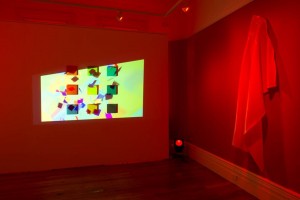
Installation view reSATURATEryb. Tom Loveday and Mark Titmarsh, GCS Gallery Abbottsleigh. Image courtesy the Gallery and artists. Photo Richard Glover
“…reSATURATEryb claims a spatial impact for saturated colour, freeing the colour from the surfaces of the room and allowing it to be in the space and not simply on the surfaces that define the space… The spatial effect of colour moves from inside the picture, through the surface and into the room in which art is shown.”
There are three rooms, each bathed in one of the primary colours: red, yellow or blue light (hence the “ryb”). Natural light, gels and artificial flood lights create the wash of colour . The works exhibited are independent of this colour bath, though embrace it and, at times, play with it.

Installation view reSATURATEryb. Lisa Jones and Stephen Little, GCS Gallery Abbottsleigh. Image courtesy the Gallery and artists. Photo Richard Glover
It is more about creating an experience of colour in space. It isn’t overwhelming, like an 80s disco with pulsating colour, or bewildering like Olafur Eliasson’s rooms of swirling coloured fog in which you become completely disoriented, placing your total faith in the museum team to ensure your safe passage.
Rather it is a conversation between the artworks, the viewer and the altered space in which they are exhibited.

Installation view reSATURATEryb. Julia Davis, Re(a)pture #2, 2014 (detail) GCS Gallery Abbottsleigh. Image courtesy the Gallery and artists. Photo Richard Glover
In the room awash with yellow light, artists include Julia Davis whose HD video loop sits alongside the shimmering voile of Jonny Niesche and the chaotic acrylic ‘maps’ of Lisa Jones.
Davis, whose work does not usually focus on colour, has toyed with an existing video installation, bringing forth loops of red, yellow and blue of volcanic explosions. Generally Davis’ practice is concerned with “the effect of time on understandings of the body in relation to landscape and how this underpins our sense of self and place.” She prefers to engage with a landscape which is charged with an inherent volatility, like a volcano, desert, or salt lake. Change here is dramatic and thrilling and, she believes, mirrors the “fragile human experience of movement, instability, rhythm, reflection and change.”
She was artist-in-residence with Spaced in Mukindubin WA , which is known for both wheat and the nearby salt lake, Lake Brown. A thoughtful artwork which evolved from her stay was a salt cast of her head, which she placed in/on the lake and photographed it as it gradually eroded away.
Jonny Niesche has had a busy year – recently seen in Melbourne, in Minerva Gallery’s hotel suite in Spring 1883), was awarded the Fauvette Loureiro Memorial Artists Travel Scholarship from Sydney College of the Arts and now, similar work here in Wahroonga. His stretched, spray painted voile with coloured acrylic mirrors, can’t really be defined as paintings, but are more like shimmery mists of colour.
Lisa Jones’ twisted coloured acrylic extrusions continue to refer to her fascinations with mapping and memory. The blue line harks back to the London Underground of her home, more specifically the dark blue of the Piccadilly line.

Installation view reSATURATEryb. Lisa Jones and Stephen Little, GCS Gallery Abbottsleigh. Image courtesy the Gallery and artists. Photo Richard Glover
She continues her conversation in paint with Tom Loveday in the Gallery foyer, who is also in the red and blue rooms. Both his installations are visually engaging: small paintings on the wall, with shifting digital colour shapes over-projected. Static colour, over shifting colour, immersed in colour.

Installation view reSATURATEryb. Tom Loveday, GCS Gallery Abbottsleigh. Image courtesy the Gallery and artists. Photo Richard Glover

Installation view reSATURATEryb. Nike Savvas and Jonny Niesche, GCS Gallery Abbottsleigh. Image courtesy the Gallery and artists. Photo Richard Glover
Nike Savvas shares the blue room with him, with Spark 2 a blue vinyl wallpaper piece. Savvas is also represented by a floor piece in the foyer, from her Sliding Ladder series. Colour has always been a major factor in her work, such as her recent joyous installation – in celebration of her sister – in the Central Court at AGNSW, but shares the limelight with the mathematical, repetitive geometry of each work’s construction.

NIke Savvas Atomic: full of love 2005 (detail) installation view. AGNSW. Image courtesy the artist and AGNSW

Nike Savvas Colours are the country, 2014, currently being installed in 1 Martin Place, Sydney. Image courtesy the artist and UAP.
I love that Nuha Saad pays homage to the Gallery’s architectural history with her painted wooden planter stands. As with her previous works, she plays with domestic architectural staples – skirting, architraves, cornices – and re-sculpts them as fresh decorative characters, invariably painted in sweetened palettes which suggest warm memories of home.

Installation view reSATURATEryb. Nuha Saad Soft Landing 2014, GCS Gallery Abbottsleigh. Image courtesy the Gallery and artists. Photo Richard Glover
Saad too has had a busy time, having been awarded a public art commission for Wulaba Park at Green Square. This no doubt, follows on from her wonderfully simple, colourful commission at Glebe Primary School.
From all this, the main question is “Does altered colour, which is light, make a difference?” What is the effect of stepping out of the white cube with perfectly attuned white light and maybe a splash of natural light into a room of coloured light? Do the works look different? Feel different? Is the experience different?
It certainly articulates each room as a treasure trove and heightens the experience of viewing. It doesn’t feel immersive, in the sense of my swimming experience, but there is a subtle shift in perception and awareness. The wash of colour extends the aesthetic connection, off the wall and into the middle of the room. The RYB experience swirls around and sets a positive tone which reaches out to entice and welcome the viewer. Colour makes you feel good.
What also swirled around me was the memory of Grace Cossington Smith. The gallery was not her home but is an old house on this girls’ school grounds, near her home Cossington in Turramurra.

Grace Cossington Smith, Eastern Road, Turramurra c. 1926 , watercolour over pencil on paperboard National Gallery of Australia, Canberra Bequest of Mervyn Horton 1984
What an incredible educational resource and ‘oh so needed’ in the deep north. How fitting to host an exhibition which thinks about colour. Colour was Cossington Smith’s life blood and her own explorations with colour, to pin each hue down by name, feel and daub, are akin to this curator’s and these artists’ own experiments and expressions.
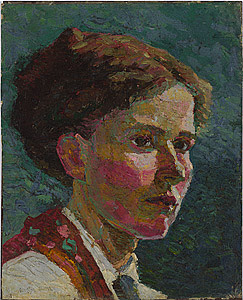
Grace Cossington Smith Study of a head: self portrait 1916 oil on canvas on board The Holmes à Court Collection, Heytesbury Pty Ltd, Perth
Cossington Smith was a revolutionary in the heart of conservative territory – exactly where these works should all reside, to make the greatest impact and have the most lasting effect. I enjoyed pausing to reflect on and revisit her contributions to an Australian art history. Nick Tsoutas chose his venue well.
Had Miss Cossington Smith been alive today, I wonder which Sydney art school she would have felt an affinity with. As a broad brush generalist overview: Sydney College seems to have a more conceptual emphasis in its teachings; COFA is now UNSW Art & Design and has moved further into 21st century technologies and thinking with its current emphasis on media and digital based practices and research. The National Art School continues with a focus on a technical foundation. Possibly, NAS would have been her choice. Though how she would have commuted daily and easily from Turramurra to any of these schools remains the mystery….
I was a bit slow off the mark and now the NAS Postgraduate show has closed – apologies – but it was an inspirational testament to the depth of talent and tenacity in the post grad cohort of 2014. Some stand outs for me were:
- Wendy Murray’s adhesive vinyl wallpaper of which I have always been a fan
-

Eloise Rankin, Nothing’s wrong, from I am my mother’s daughter, 2014. installation. Image courtesy the artist
Eloise Rankine’s ceramic installation I am my mother’s daughter tells a personal story of nostalgic yearnings for home: small scale porcelain pots and bowls sat in hand crafted boxes, against backdrops of fabric swatches from her mother’s quilting samples; and
- Elwira Titan, now represented by Annandale Galleries, whose paintings were of an infinitesimal detailed repetition, an endless meditation, on binary form: attaining the sublime in digital potential.
- Hannah Toohey’s stitched portrait outlines of local folk, hung as a forest of fabric;
- Catherine O’Donnell’s large scale technically wondrous charcoal drawing, Flat Abstraction from her series Notion of Home was impressive. Her CV is already extensive, as a finalist in the 2014 Rick Amor Prize for Drawing at Ballarat Regional Art Gallery, in Art on Paper, Hazelhurst Art Award, 2013 and a solo touring exhibition Light and Shadow curated by Anne Loxley for Penrith Regional Art Gallery. O’Donnell is represented by Flinders Street Gallery, Sydney;
With studio spaces open, as well as the main NAS Gallery, the overall exhibition was a great showcase of NAS’ strengths. Add in the reminder for your diary, same time next year. In the meantime, NAS’ Graduate Show opens 28 November. Worth a visit.
One exhibition which I know is still on, in fact has only recently opened, is the survey of Sarah Robson’s career at Manly Art Gallery and Museum.
With works dating from 1994 to 2014, Sarah’s path to self-expression is affirmed as singular and continuous: a pathway to determine “how stillness and space give form to our imagination”.
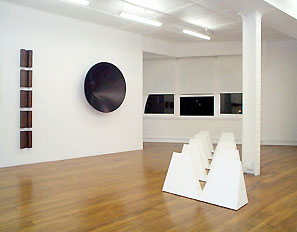
Sarah Robson installation view exhibition 1997, Gitte Weise Gallery. Image courtesy Gitte Weise Gallery and the artist
The sculptural works are characterised by repetitive 3D shapes which are precisely arranged to fit and sit together in defined patterns. There is no room for spontaneity or broad sweeping gestures: each work is the summation of research and thinking; deliberate crafting; layers of beautiful paint and exacting installation.
Jackie Dunn, in her curator’s essay, talks of Sarah’s work as the epitome of elegance; a complexity which is pared back into a refined simplicity: deceptively simple yet deceptively complex arrangements.
Sarah’s work is succinct. There is great beauty and elegance in being succinct, be it words (as my English teacher now novelist Marion Halligan advised), artworks, architecture or fashion. Sarah looks to distil from the complex fundamentals (mathematics, science, politics) which frame contemporary life, a single moment of time in space in her works – not capture nor interrupt a flowing movement, or recreate an entire intellectual discussion – rather distil the essence of complexity, repetition and motion into a singular, simple, elegant moment.
This leaves much room for the mind to drift …..
Her most recent works toy with the molecular structure of carbon, a particularly complex element on any given interpretation. In these screen-prints, Sarah’s concern for contemporary environmental issues are made manifest, adding her voice to the public debates which, as she puts it, must seek a “synergy between humanity and nature.”
She has exhibited regularly with respected gallerist Gitte Weise since the mid-90s, a relationship which introduced opportunities for international exhibition and recognition. There have been memorable private and public commissions, all realised with exacting professionalism and dedication to artwork and client.

Sarah Robson Corner Composition #5 2009 and Infinite in all Directions #1 2009 at Depot Gallery, Sydney. Image courtesy the artist and Gitte Weise Gallery, Berlin & Sydney

Sarah Robson No beginning no end 2009 at Depot Gallery, Sydney. Image courtesy the artist and Gitte Weise Gallery, Berlin & Sydney
Her last solo exhibition in Sydney in 2010, introduced the corner pieces Corner compositions: fixed webs of painted steel which push and pull the edges of walls, to enliven the point which we tend to overlook, namely the corner of the room. Other works in this 2009 exhibition are called No beginning no end – a title and description which would sit comfortably with most of her works.
It is great to see such depth across a career. The Manly Gallery space is beautifully proportioned to compliment the work and the curatorial direction has been particularly thoughtful.
Sarah continues with her post grad studies, researching creative thinking. She will host a discussion Why Creativity? during the exhibition, to share ideas and perspectives on the importance of creative thinking and a creative approach to day -to-day living. “What role does culture play in stimulating creative solutions …” is one question asked. Sarah will be speaking, together with Prue Robson, a creativity and change consultant, Katherine Roberts, Curator at Manly Art Gallery, Ross Heathcote from MAG&M on creative collaborations and yours truly on support and philanthropy for the arts.
On Saturday 22 November from 4pm at Manly Art Gallery.
Spatial Interventions is on until Dec 14.
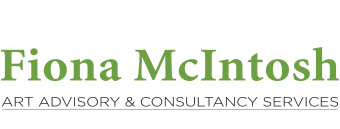
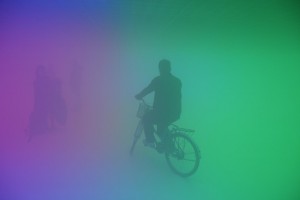
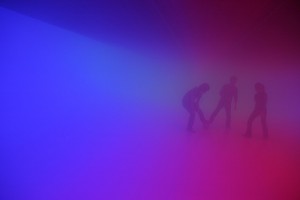








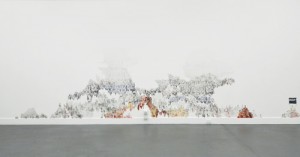

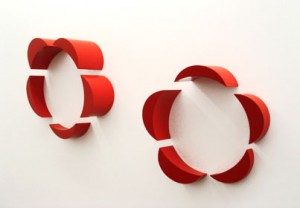



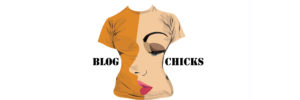
4 Comments
Excellent !!
Congrats to all the Artists, Nick Tsoutas and Fiona McIntosh for the inisightful, eloquent writing and bringing these Exhibitions to our attention.
Well done, I really enjoyed the article. Beautiful artworks.
Nice work Fi. The blog looks so much better in this format than the email.. I agree with your observations about Sarah’s show. It looks great in that space. P
[…] Artist Sarah Robson‘s practice is informed by her wider study into creativity, the core of her research at UNSW Art and Design. She currently has an exhibition on at Manly Art Gallery & Museum which surveys the trajectories of her career. The exhibition was reviewed in the last post on this blog. […]
Beautiful writing. I swam in grey this morning at Bondi, rather green. Galleries in schools an interesting idea. I’m curious.
[…] Lopez Gallery represents Lisa Jones. Mick the Gallery is currently online which is where the poignant paintings of Clara Adolphs can be […]